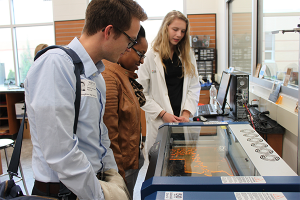
A Stoughton High School student demonstrates how to use a laser engraver in the school’s fab lab.
To help equip students with the job skills that an evolving global economy demands, the Wisconsin Economic Development Corporation (WEDC) is again accepting applications for the Fabrication Laboratories (Fab Labs) Grant Program.
Now in its second round, the program supports hands-on science, technology, engineering, art and math (STEAM) education by assisting public school districts with equipment purchases for fab labs. These high-tech educational workshops are equipped with 21st-century computer-controlled manufacturing components, such as 3D printers and laser engravers.
The first round of awards was made in May 2016. While the 2015-17 state budget included $500,000 in funding, a total of 90 applications were submitted requesting over $2 million in funding. In response to this strong demand, WEDC added $100,000 to the budgeted amount, and ultimately provided 25 Wisconsin public school districts with up to $25,000 each in grant funding.
For the second round, WEDC is allocating $500,000 and anticipates awarding 20 grants. The application period is now open, with applications due by Thursday, Dec. 15.
“The response to this program has been overwhelming, and I’m pleased that even more school districts will be able to participate in the coming school year,” said WEDC Secretary and CEO Mark Hogan. “This program is another example of the strong partnership between the local school districts and the state of Wisconsin, and how we are working together to ensure that students are prepared for the jobs of the future.”
Grants will be awarded through a competitive process, with applications evaluated based on readiness and long-range planning, curriculum, business and community partnerships, financial need and previous awards. WEDC’s Fab Labs Grant Program requires matching funds from each school district.
Instructional support
While awardees must use funds to purchase equipment used for instructional and educational purposes, the actual equipment is just one part of the equation, says Randy Hulke, Director of the Discovery Center Fab Lab and Director of Applied Research and Technology Transfer at University of Wisconsin-Stout. Training and curriculum development are equally important and are considered as applications are evaluated.
“Fab labs have brought a whole new set of tools that are fairly inexpensive and relativity simple to use to school districts,” says Hulke. “It’s not just about the equipment, but how the tools can be used to deliver curriculum and learning outcomes.”
Hulke added that it is important that teacher professional development and other support is needed to fully realize these outcomes.
To that end, Hulke and colleagues from both the School of Education and Discovery Center at UW-Stout, which launched its fab lab in February 2013, are developing resources to support fab labs and instructors around the state. The first is a series of in-service professional development sessions based on a weeklong pilot retreat the university sponsored this summer. At that retreat, teachers focused on the design thinking process and how to integrate it into curriculum to help students bring their ideas to life. UW-Stout faculty are working on an abbreviated version to reach more teachers.
Hulke and other faculty are also working on a web portal to link the state’s fab labs. The intent is to provide an online curriculum repository for fab lab instruction, resources that troubleshoot equipment issues, and support for teachers to integrate these tools in their schools. The web resources are expected to be available in the summer of 2017.
WEDC provided funding for both the training and web portal development. WEDC also collaborated with UW-Stout to assess Wisconsin’s fab labs, identify best practices and identify opportunities to build a statewide network.
Taking Fab Labs to the community
Schools, however, aren’t the only ones to benefit from the growing number of Wisconsin’s fab labs; WEDC requires schools to make their fab labs accessible to the public, and many schools are offering training and workshops to community members after school.
“One of the opportunities these fab labs offer is the link to local businesses and the community. They break down some of those barriers between schools and the community,” says Hulke. “These are dynamic spaces. With the investments that WEDC is making, their numbers are growing very rapidly. I don’t think anyone wants to contain that energy, but we have a prime opportunity to advance it even more by coordinating efforts.”
In addition to building partnerships with the community and solving local problems, the teaching and theory behind fab labs helps develop future workers in Wisconsin’s communities — in manufacturing and beyond.
“With fab labs, students learn how to engage in problem-solving and take on that role not just in school, but in work and life,” says Hulke. “That makes for a highly engaged worker—someone who can come into an organization and recognize where they can add value and do it. That’s what employers looking for.”





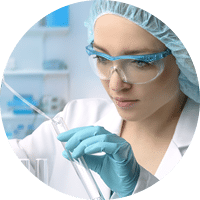

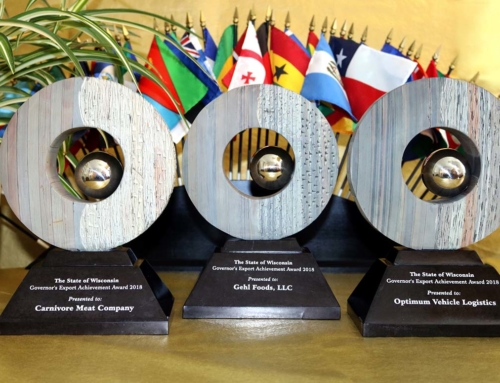


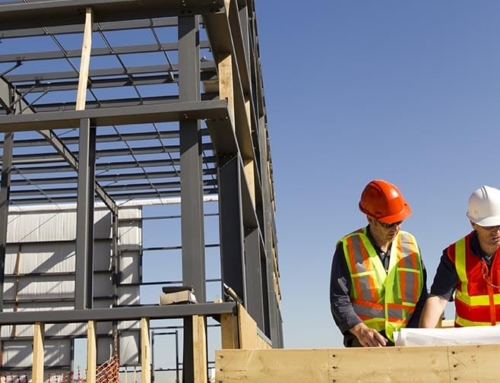
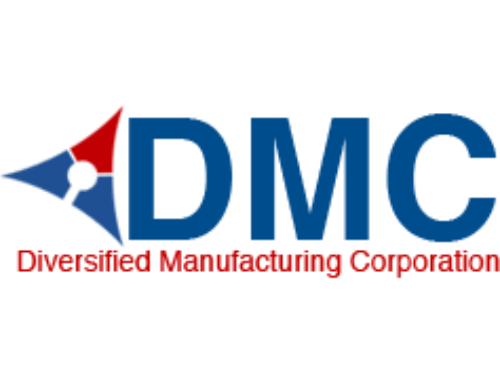
FOLLOW US